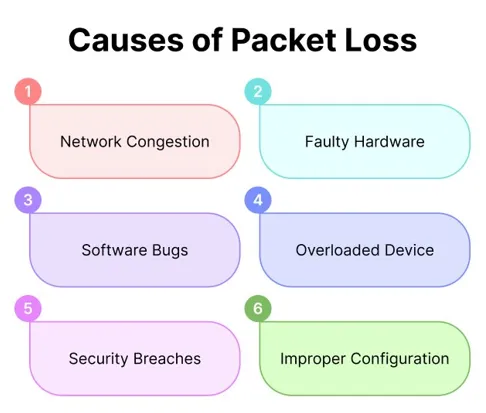Despite what you may think, the online gaming industry is booming more than ever, generating a massive revenue of $176.06 billion in 2023. Out of the 3.03 billion global video gamers, 2.82 billion are online gamers.
With multiple high-speed internet providers like Xfinity, platforms for cloud gaming on the rise, the creation of the metaverse, and the implementation of technologies such as virtual reality and augmented reality, the future of online gaming is one filled with more accessible gaming across borders, virtual worlds, and immersive and interactive experiences.
Nevertheless, the world of gaming has its fair share of technical difficulties from connectivity problems high latency, jitter, and packet loss all playing major roles in leveling down your online gaming experience.
While you can resolve connectivity issues by choosing providers like Xfinity, packet loss is frustrating since it has no apparent cause and can be difficult to troubleshoot, with no guarantee of being fixed.
Luckily, there are steps you can take to minimize packet loss and enhance your online gaming experience. This guide will explore what packet loss is and the steps you can take to reduce it.
What is Packet Loss in Online Gaming?
Gaming online requires a quick transfer of large amounts of data. To make this process easier, the data is split into small units, known as packets. When one or more of these packets fail to make it to their intended destination, the phenomenon is known as packet loss.
Packet loss is measured as a percentage of lost packets to received packets. For instance, if a total of 100 packets have been sent, and only 70 have been received, you have a 30% packet loss.

Congested networks, faulty hardware, and transmission errors are common causes of packet loss in online gaming and will be explored in detail further.
When you’re enjoying a multiplayer game on the cloud, where real-time decisions impact your performance, even a small data loss can result in a poor gaming experience.
Causes of Packet Loss in Online Gaming
Like any problem, getting to the root of its causes will help you better resolve it. Let’s look at three of the most common causes of packet loss in online gaming:

· Congested Networks
A congested network occurs when there are extremely large amounts of data that need to be transferred. The large amounts of data mean that the transfer process becomes slower. To keep up, some packets are abandoned.
· Faulty Hardware or Software
Outdated hardware such as older network routers, cables, switches, and firewalls could slow down your network and cause packet loss. In addition, devices with outdated chipsets and output devices such as older smartphones, personal computers, or laptops can also result in packet loss.
Packet loss can’t be solely attributed to faulty hardware, software bugs, and glitches can also impact net performance and packet delivery.
· Data Transmission Errors
This is partly dependent on the type of internet connection you have. Often, wireless internet networks face more packet loss than wired internet networks. This can be due to radio frequency interference, weaker signals, distance, and barriers like doors or walls. With wired networks, packet loss may be due to faulty cables.
Now that we’ve explored the causes, let’s explore some preventive precautions you can take to reduce packet loss and enjoy online gaming fearlessly.
3 Tips to Reduce Packet Loss in Online Gaming
While there is no guaranteed fix for packet loss, the tips shared below will allow you to minimize packet loss.

1. Upgrade to a Better Internet Connection
If your internet connection provides speeds lower than 100 MBPS (megabytes per second) you might want to look for internet service providers that are well-reputed for providing reliable, stable, and speedy internet connections.
Connections such as Xfinity can reduce packet loss by enabling faster communication between your online gaming device and the server, making your online gaming experience seamless. You can contact Xfinity customer service for expert and tailored assistance.
2. Switch to Wired Connections Instead of WIFI
Wired connections are always better for online gaming compared to wireless connections. This is because they provide a more stable and direct connection to the router, with minimal signal interference. On the contrary, wireless connections can result in signal interference depending on factors like distance, signal barriers, and competing internet providers in your area, resulting in packet loss.
3. Use Updated Hardware and Software
While a wired internet connection is always the better bet when picking an internet service provider for your online gaming needs, there are chances you may be limited to using WIFI. In that case, make sure to update your router to one tailored for online gaming, preferably new, instead of going for one around ten years old. Additionally, you will also want to upgrade your modem for higher bandwidth and internet speed. This will allow faster data transfer, reducing packet loss as well as keeping your operating system updated.
Time to Level Up Your Online Gaming Experience!
Packet loss can turn a decent gaming experience into a poor one in a matter of seconds. While there is no permanent solution to packet loss, staying informed about what it is and its causes, and following the 3 simple tips shared in this guide can help you effectively reduce packet loss.
A stable and reliable internet network is at the core of a superior gaming experience. Optimizing accordingly will make sure you can entirely immerse yourself in it.

